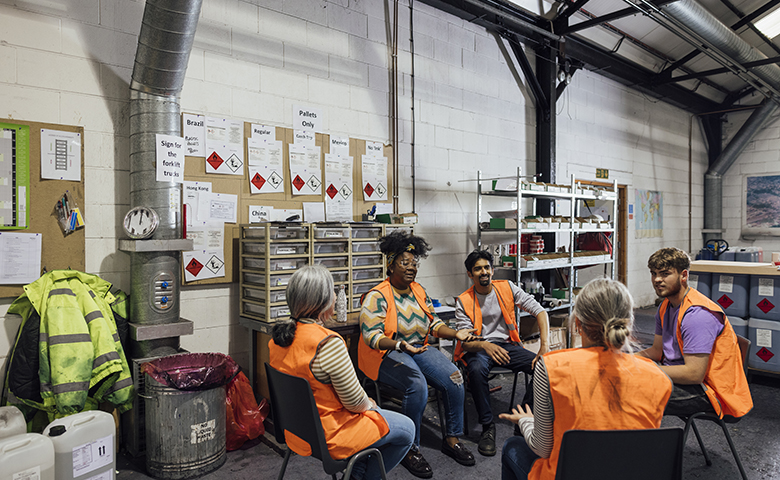Fear is a powerful thing, and Halloween has historically been thought of as a scary time of year. Halloween traditions have been linked to the Celtic festival of Samhain, a new-year celebration that means “summer’s end.” It’s a time of stocking up on food and supplies for the winter, slaughtering cattle and tossing their bones into the fire—which is where we get the term bonfire.
And there’s a spiritual element too. During the Celtic New Year, the veil separating the worlds of the living and the dead was believed to be at its thinnest, allowing the departed to once again walk the Earth, some seeking to say a final goodbye before moving on permanently to the great beyond.
It’s no surprise the morbid spiritual nature of Samhain and those early bonfires provided the perfect setting for telling stories, divining fortunes and foretelling destinies. Stories don’t just create an emotional connection, but they also transfer knowledge and guide future actions. While spooky stories are often entertaining, they are also meant to demonstrate how to handle our fears.
Talking about a spooky thing takes away its power, just like talking about your state of mind gives you more control over a situation. That’s why stories are such effective tools when it comes to teaching safety habits. Stories about injuries and close calls help us observe and understand the state a person was in when disaster struck, providing an opportunity to see how that state may have contributed to risky critical errors. Stories help us learn vicariously, and they work as effective and relatable illustrations of why it’s important to consider human factors when trying to avoid getting hurt. That’s why storytelling is a key part of SafeStart—because people remember stories long after the training.
SafeStart has two spooky SafeStart stories ready for you to tell at your next safety meeting, just in time for Halloween. The first story, Ghost Phone, features a teenager home alone on a dark and rainy day. While talking on the phone with her friend, something weird happened (the weird part was not a teenager talking on the phone—it was the ’90s). Was it a ghostly encounter or something else? This SafeStart story reiterates how fear can impact your actions.
The second story, Web of Terror, deals with late nights, the Hunter’s Moon and a predatory yellow and black spider. Although there are a lot of things people would deem scary in this story, it was the thing you’d least expect that was almost the teller’s undoing.
Both are great SafeStart stories to accompany SafeStart training. And even if you haven’t implemented SafeStart training in your facilities, these stories can still help you to reduce human error. Share these stories or use them as the basis to create your own spooky story—you never know who will be impacted by your message, and it may even save their life.

